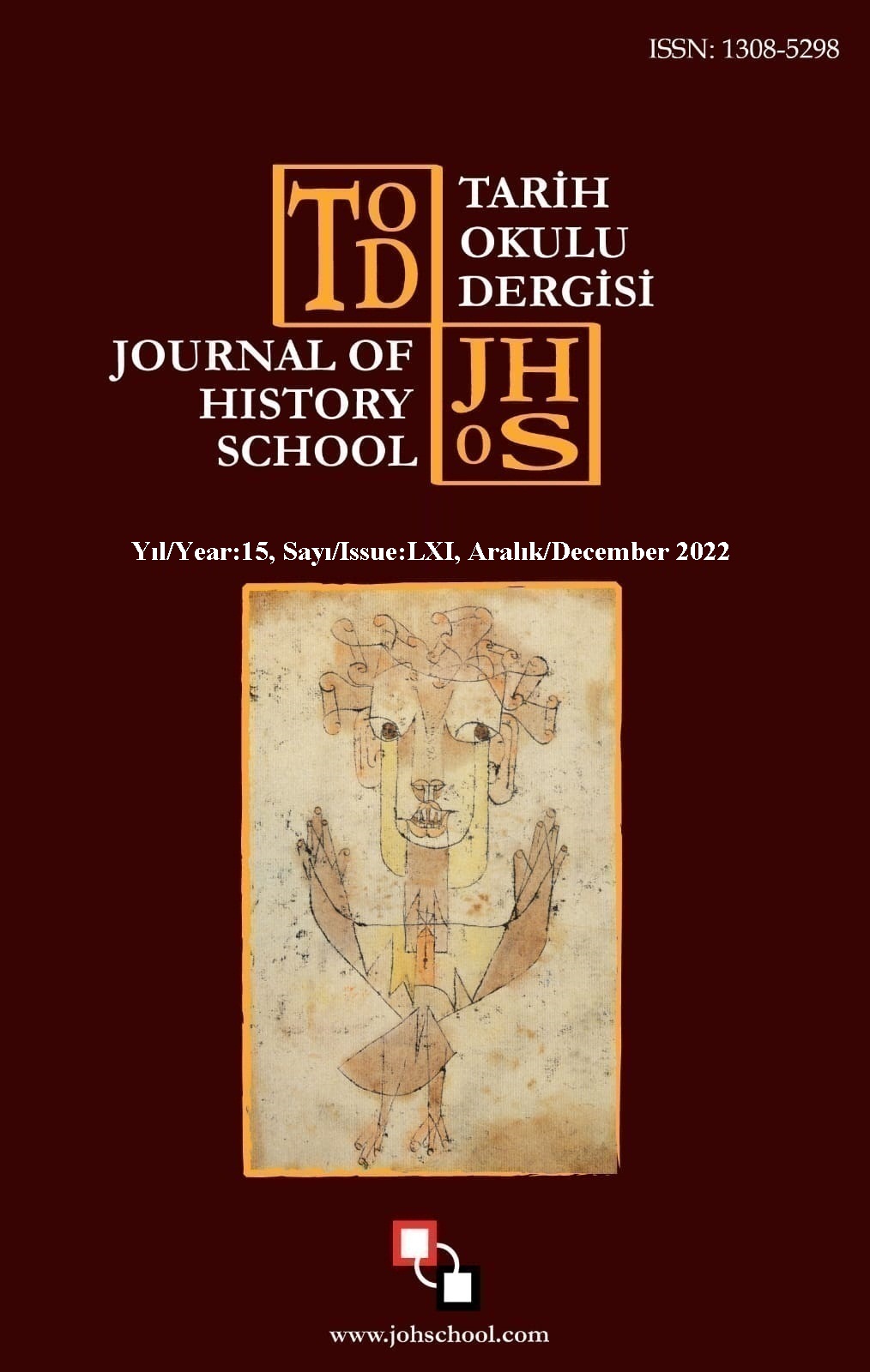Author :
Abstract
Bu araştırmanın amacı işlemsel okuma modelinin 7. sınıf öğrencilerinin zihinsel imaj oluşturma becerilerine olan etkisini tespit etmek ve görüşlerini ortaya koymaktır. Araştırmanın nicel boyutuna ait örneklemi; deney (n=33) ve kontrol grubunda (n=33) yer almak üzere toplam 66; nitel boyuta ilişkin çalışma grubu ise araştırmaya gönüllü olarak katılan 14 öğrenciden oluşmaktadır. Karma desende gerçekleştirilen araştırmanın nicel boyutu öntest-sontest kontrol gruplu deneysel desene göre tasarlanmıştır. Nitel boyutta ise deney grubunda yer alan öğrenciler ile yüz yüze görüşmeler gerçekleştirilmiş ve veriler ses kayıt cihazı ile kaydedilmiştir. Araştırmanın deneysel uygulama süreci 8 hafta deneysel uygulama, iki hafta öntest-sontestlerin yapılması olmak üzere toplam 10 hafta sürmüştür. Deney grubunda kullanılan stratejiler, öğrencilere Aşamalı Sorumluluk Aktarım Modeli ile öğretilmiştir. Araştırmada nicel verilerin toplanmasında “Zihinsel İmaj Değerlendirme Formu (ZİDF)”; nitel verilerinin toplanmasında ise yarı yapılandırılmış görüşme kılavuzu kullanılmıştır. Nicel verilerin analizinde yüzde (%), frekans (f), bağımsız gruplar t-testi, Mann-Whitney U testi; nitel verilerin analizinde ise içerik analizinden yararlanılmıştır. Araştırma bulgularına göre öğrencilerin ZİDF puanlarının, deney grubu lehine istatistiksel açıdan anlamlı fark gösterdiği tespit edilmiş ve deney grubu öğrencilerinin, işlemsel okuma modeline ilişkin olumlu görüşlere sahip oldukları tespit edilmiştir. Ayrıca öğrenciler işlemsel okuma modeline uygun Türkçe öğretiminin; bilginin kalıcılığını artırdığını, sınıf ortamında farklı strateji, yöntem ve tekniklerin kullanımını sağladığını ve zihinsel imaj oluşturma becerilerini geliştirdiği yönünde görüş bildirmişlerdir.
Keywords
Abstract
The aim of this research is to determine the effect of the transactional reading model on the mental image formation skills of 7th grade students and to reveal their opinions. The sampling in the quantitative dimension of the study consisted of a total of 66 students, 33 of whom were in the study group and 33 of whom were in the kontrol group. The sampling in the qualitative dimension consisted of 14 students who voluntarily participated in the study. In the present study, the Explanatory Sequential Design, which is one of the mixed method designs in which quantitative and qualitative data are used together, was used. The quantitative dimension of the study was designed in line with the experimental design with a pretest-posttest control group. In the qualitative dimension, interviews were made with the students in the experimental group, and the interviews were recorded with an audio recorder. The implementation process of the study lasted 10 weeks which consisted of 8-week experimental implementation, and 2-week pretest and posttests. To collect the quantitative data of the study, “Mental Image Evaluation Form (MIEF)”, which was developed by the researcher, were used. The strategies that were used in the experimental group were taught to the students with the Gradual Responsibility Transfer Model. To collect the qualitative data, the “Semi-Structured Interview Form”, which was developed by the researcher, was used. In the analyses of the data, the percentages (%), frequencies (f), t-test of Independent Groups Mann-Whitney U test were used. the content analysis method was made use of in the analyses of the qualitative data. According to the findings obtained in the quantitative dimension of the study, a significant difference was detected between the mental image establishing scores of the students in the experimental and control group in favor of the experimental group. According to the qualitative findings of the study, it was determined that the experimental group students had positive opinions about the transactional reading model. In addition, students also stated that Turkish teaching that was carried out according to the transactional reading model increased the permanence of knowledge, and ensured that different strategies, methods and techniques are used in the classroom environment, and also improved mental image formation skills.
